
Anyone that’s resistance-trained most likely has felt the pump.
Simply, it’s where the whole muscle temporarily increases in size due to an accumulation of fluid within it.
During muscle contraction, veins carrying blood from the muscle to the heart get compressed, whereas arteries continue to deliver blood to the muscle from the heart, fundamentally producing a build-up of plasma within and around muscle fibers, evoking the pump.
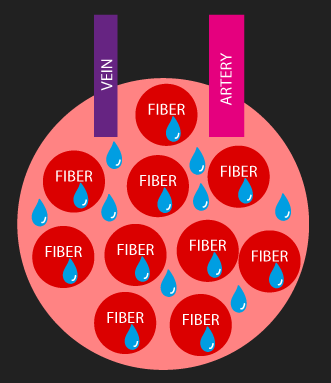
Moreover, the build-up of metabolites as a result of chemical reactions within muscle fibers, like lactate, can draw additional fluid into the muscle fiber, thereby further intensifying the pump.
An optimal pump can be accomplished by ensuring muscle activation is high enough to meaningfully compress the veins carrying blood from the muscle to the heart, and ensuring that you’re performing numerous or long-lasting contractions with minimal rest to enable more fluid accumulation.
However, is optimally evoking a pump even necessary for maximizing hypertrophy?
Let’s find out.
Potential Evidence Suggesting a Greater Pumps Mean More Growth
Firstly, muscle fiber swelling (that is, the enlargement of a muscle fiber due to fluid accumulation, which occurs during the pump) has been mechanistically associated with muscle fiber growth.
More precisely, osmosensors within muscle fibers can detect the build-up of fluid that produces swelling. Such swelling may be considered a threat to the integrity of the fiber, thus initiating anabolic and anticatabolic pathways that ultimately hypertrophy the muscle fiber for reinforcement.
Indeed, some areas of the literature may potentially be used as evidence to suggest a greater pump means more hypertrophy.
A drop set involves performing repetitions to failure with a given load and then immediately reducing the load (typically by 15-25%) and performing repetitions to failure again. Generally, one to three load reductions are done. Moreover, multiple drop sets for a given exercise can be performed with rest intervals between them.
Due to the numerous bouts of repetitions to failure performed back to back, fluid accumulation is going to be much greater compared to performing normal sets that have you rest between repetition bouts.
As detailed in our drop set article, with isolation exercises at least, some evidence suggests drop sets might confer greater hypertrophy.
More precisely, Varovic et al. compared how performing 2-5 drop sets per session on the leg extension, interspersed with 120 seconds of rest, with each drop consisting of repetitions to failure with 2 load reductions compared to performing 2-5 sets of repetitions to failure on the leg extension, with 120 seconds of rest between sets. It was found quadriceps growth was overall greater with the drop set training.
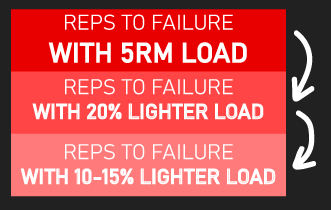
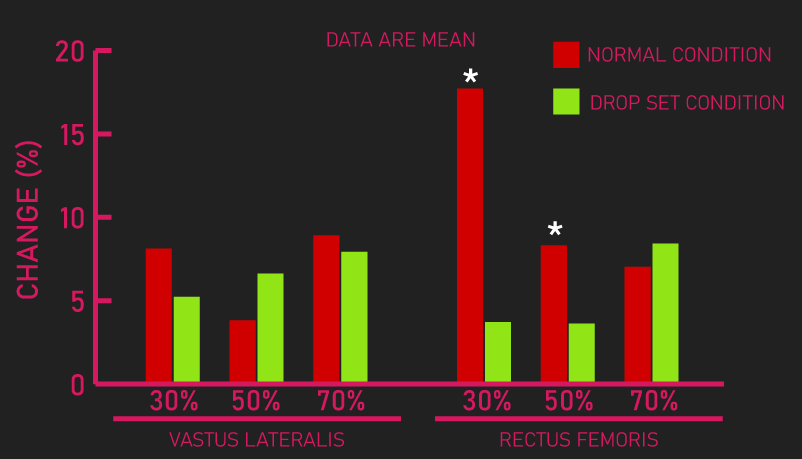
Fink et al. compared a drop set consisting of repetitions to failure with 3 load reductions (the precise drop set details are shown in the image below) to performing 3 sets of repetitions to failure on the triceps pushdown. It was found triceps hypertrophy was greater with drop set training.

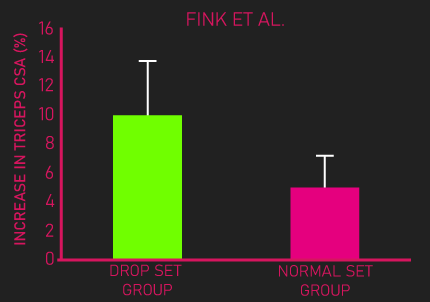
Consequently, although neither study directly examined it, it’s possible the greater pumps achieved with drop set training could explain the greater hypertrophy.
Using shorter rest intervals between normal sets would also evoke a greater pump, as the lessened rest heightens the factors that drive the pump.
As examined in our rest interval ultimate guide article, the research on the optimal rest interval duration with isolation exercises isn’t crystal clear.
But, one study by Fink et al. found when performing sets on three triceps and three biceps isolation exercises per session, resting for 30 seconds between sets produced greater arm cross-sectional area increases compared to resting 3 minutes between sets.
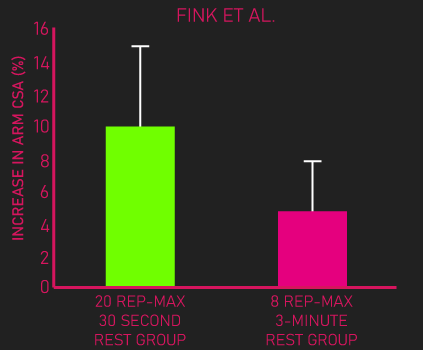
It’s plausible the greater pump with short rest intervals could be the cause of more hypertrophy.
Using a constant tension technique, which is where you avoid locking out the joints involved in an exercise during your repetitions, due to forbidding intermittent muscle relaxation between repetitions, would sustain higher compression of veins and probably higher metabolite accumulation versus performing repetitions where you more or less lock the joints out.
One study by Goto et al. compared partial range of motion skull crushers that kept a constant tension on the triceps to full range of motion skullcrushers. Triceps cross-sectional area gains were greater with the constant tension skullcrushers. Perhaps the greater pump with a constant tension explains these findings.
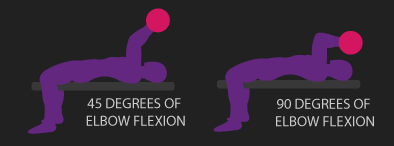
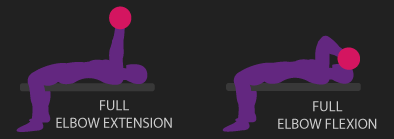

Finally, one study by Hirono et al. actually found a correlation between the pump and hypertrophy.
Subjects trained leg extensions with 3 sets of 8 repetitions with an 80% one-rep max load, using 60 seconds of rest between sets, 3 times per week for 6 weeks.
During the first session, immediately, 5 minutes, 10 minutes, and 15 minutes after it, quadriceps thickness was measured. This was considered a measure of muscle swelling.
3 to 7 days after the final training session on the 6th week, muscle thickness was also measured, but this measure was considered an indicator of hypertrophy.
Ultimately, the researchers found correlations between the magnitude of muscle swelling measured at all time points after the first training session and the amount of hypertrophy experienced by the end of the study.
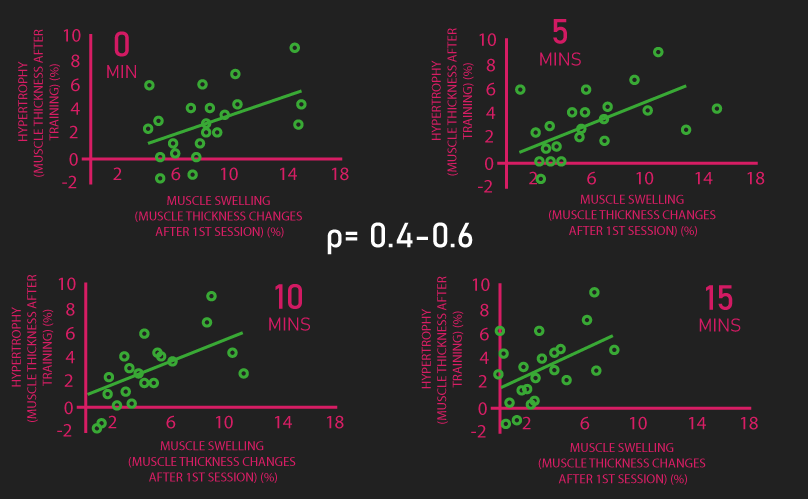
Put another way, the subjects that saw the greatest pump of their quadriceps after the first session, ultimately seemed to experience the greatest quadriceps hypertrophy.
Although, it’s worth pointing out the correlations were not super strong. The Spearman coefficient ranged from 0.4-0.6. 1 is what would indicate a perfect positive linear relationship.
Before moving on, if you’re curious about creating an effective training program for muscle hypertrophy, our high quality partner Alpha Progression can help. It can generate a highly effective program for you, track your workouts live with in-built progression recommendations, provide graphs displaying your long term progress, and it has a massive exercise database with more than 550 exercises.
Click HERE (the link opens in a new tab) to get a free 2 week trial of the apps features. If you like it and go beyond, the link also gives you 20% off a subscription!
We never promote trash at the House of Hypertrophy, so rest assured the app is high quality. The reviews speak to this, 4.8 starts (based on more than 7,000 reviews) on Google play, and 4.9 stars in Apple’s store (based on nearly 400 ratings).
Potential Evidence Suggesting a Greater Pumps Does Not Mean More Growth
So, some areas of the drop set, rest interval, and constant tension literature, as well as a correlational study potentially suggest training in a way that produces a greater pump evokes more hypertrophy.
However, are there other areas of the literature that go against this conclusion?
There are. Let us assess this data and then come to some conclusions.
Jenkins et al. had subjects, on different days, perform 3 sets of repetitions to failure with either a 30% one-rep max load or 80% one-rep max load, and immediately measured quadriceps cross-sectional area after (as an indicator of muscle swelling).
Quadriceps cross-sectional was greater after using a 30% one-rep max load.

This makes sense, when training to or close to failure, using lighter loads requires you to perform a higher number of repetitions compared to using heavier loads. Higher repetitions produce longer vein compression and subsequently higher fluid accumulation. Higher repetitions also likely permit higher metabolite accumulation.
Here’s the thing, however, there’s a substantial number of studies indicating when repetitions are performed to or near failure, training with 30% one-rep max loads produces similar muscle hypertrophy to 80% one-rep max loads, suggesting that the greater pump achieved with lighter loads does not mean more hypertrophy.
Moving on, even though we’ve established some areas of the rest interval and constant tension literature potentially indicating the greater the pump the more muscle hypertrophy, other areas of these two sets of the literature suggest otherwise.
Exploring the rest of interval literature first, and as thoroughly examined in our rest interval ultimate guide article, a few studies demonstrate with compound exercises and all other variables constant, resting 2.5 minutes or more between sets produces more hypertrophy than resting for 90 seconds or less.
As it’s more than likely resting for 2.5 or more minutes between sets evokes a lower pump compared to resting 90 seconds or less, this data indicates the pump may not be tightly associated with hypertrophy.
As for the constant tension literature, despite the aforementioned Goto et al. study, a different study by Pinto et al. compared partial range of motion preacher curls that kept constant tension on the biceps to full range of motion preacher curls and found no statistically significant differences in biceps thickness gains between the two.
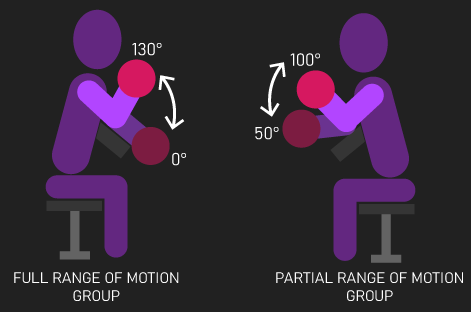
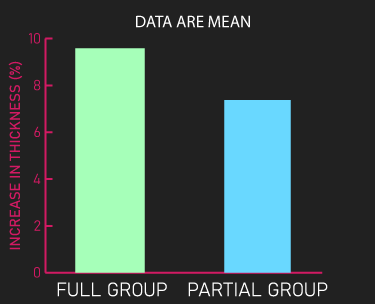
Two studies by Tanimoto et al., with a range of exercises, compared how using a constant tension technique compared to simply locking out the involved joints. Increases in thickness gains of various muscles were not statistically different between the two methods.
Consequently, these three studies fail to support the notion that a constant tension (and thus a greater pump) produces more hypertrophy.
The final area of the literature worth sharing that questions the pump’s strong association with hypertrophy is the blood flow restriction literature.
Blood flow restriction training is where some form of pressure (typically via a tourniquet cuff) is applied to the upper arms or legs during an exercise. When correctly done, this partially constricts the arteries carrying blood from the heart to the muscle, but completely constricts the veins carrying blood from the muscle to the heart.
Blood flow restriction is likely best used when performing repetitions to or close to failure with loads at or below 50% one-rep max.
The numerous repetitions required to achieve or near failure with these light loads, as well as the complete compressions of veins via the pressure, would evoke a great pump.
This type of blood flow restriction training, when compared to non-blood flow restriction with heavier loads (and thus fewer repetitions), produces a much greater pump.
Yet, a meta-analysis by Lixandrao et al. found blood flow restriction training with loads between 20-40% one-rep max ultimately produces similar hypertrophy to non-blood flow restriction training with 70-90% one-rep max loads.
Consequently, this data indicates a greater pump does not necessarily mean more hypertrophy.
Conclusion
Summarizing the current literature, although some areas may lead one to believe a greater pump means more hypertrophy, numerous other areas suggest otherwise.
As such, I think it’s fair to say achieving a greater pump more than likely does not mean you’ll experience more muscle hypertrophy.
Now, this does not necessarily mean the pump plays no role in hypertrophy.
Just because more of something (the pump in this case) does not produce more of another thing (hypertrophy in this case), we cannot definitively conclude there is no causation at all.
It’s possible some small degree of the events associated with a pump can be directly causative of some small amounts of hypertrophy. After all, recall there are mechanisms by which cell swelling could cause hypertrophy.
But even so, it’s clear an individual need not train in a way that maximizes the pump to maximize hypertrophy.
But, I still feel there are other areas where the pump can be useful.
For one, remember that high muscle activation is one prerequisite for achieving a great pump, as it meaningfully compresses veins. Thus, the pump can be considered a solid indicator of what muscle/muscle regions you’re training.
For example, let’s say you’re performing pull-ups, but you tend to significantly round your shoulders near the top. After altering this such that you maintain a more retracted shoulder position at the top, you notice a greater pump in your upper back and perhaps lats. In this scenario, I think it’s not unreasonable to assume this change of technique probably resulted in you better recruiting the upper back and lats, which is a good thing if that’s what you’d like to do with pull-ups.
Finally, the pump can be a very enjoyable part of training. I’ll leave you with the everlasting words of Arnold:
Remember to feel free to check out the Alpha Progression App if you’re interested. Also feel free to check out our free bench press e-book below.

